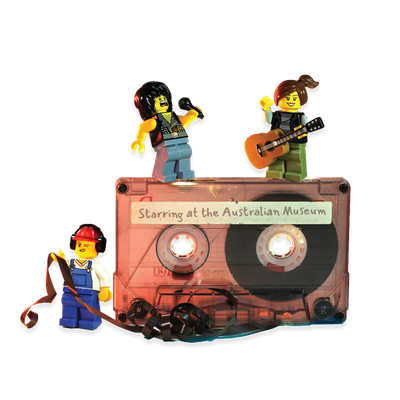Your search returned 12425 results
By Page Type
By Tag
- fish (966)
- blog (696)
- fishes of sydney harbour (401)
- First Nations (297)
- Blog (236)
- AMRI (169)
- archives (164)
- Eureka Prizes (145)
- Aboriginal and Torres Strait Islander (135)
- insect (126)
- Ichthyology (124)
- geoscience (109)
- minerals (102)
- climate change (99)
- podcast (94)
- Fish (91)
- Anthropology (89)
- International collections (80)
- Minerals Gallery (78)
- wildlife of sydney (78)
- Labridae (77)
- frog (73)
- gemstone (70)
- photography (65)
- history (63)
- Mollusca (60)
- gem (59)
- staff (59)
- Birds (56)
- Gems (56)
- Indonesia (56)
- education (55)
- shark (55)
- AMplify (54)
- people (53)
- earth sciences (50)
- past exhibitions (50)
- exhibition (49)
- Gobiidae (48)
- sustainability (46)
- Pomacentridae (45)
- Serranidae (44)
- lifelong learning (42)
- science (42)
- Earth and Environmental Science (41)
- Syngnathidae (41)
- Ancient Egypt (40)
- Bali (40)
- bird (40)
- dangerous australians (40)
-
Coastal habitats
https://australian.museum/learn/teachers/learning/coastal-habitats/Coasts are places where the land meets the sea.
-
Forest habitats
https://australian.museum/learn/teachers/learning/forest-habitats/Forests are places with tall trees and a thick canopy. In Australia the three main types of forest include dry forests, wet forests and rainforests.
-
Urban habitats
https://australian.museum/learn/teachers/learning/urban-habitats/Lots of people live in big cities and towns. Many Australian plants and animals have adapted to live with us in our gardens, buildings, parks and harbours. Find out what might live in your backyard.
-
Damselfly life cycle
https://australian.museum/learn/teachers/learning/damselfly-life-cycle/Damselflies are insects. They have three stages in their life cycle: egg - larva - adult. They have a long and slender abdomen, two pairs of wings and three pairs of long legs. They also have very large eyes.
-
Green and Golden Bell Frog Life cycle
https://australian.museum/learn/teachers/learning/green-and-golden-bell-frog-life-cycle/Green and Golden Bell Frogs are amphibians. They have four stages in their life cycle: egg - tadpole - metamorph - adult.
-
Spotted Marsh Frog Life cycle
https://australian.museum/learn/teachers/learning/spotted-marsh-frog-life-cycle/The life cycle of a Spotted Marsh Frog, Limnodynastes tasmaniensis.
-
History of the Mammal Department
https://australian.museum/about/history/people/history-of-the-mammal-department/The Mammalogy department was formed in 1890 under the direction of Edward Pierson Ramsay, the first Australian-born curator for the museum.
-
Controversy in museums: a timeline
https://australian.museum/about/history/timelines/controversy-in-museums-a-timeline/This timeline first appeared in the Journal of Museum Education, Volume 23, No 3, 1998 and was co-edited by Maureen McConnell and Honee Hess. It is reproduced here with kind permission of the authors.
-
A timeline of fossil discoveries
https://australian.museum/learn/science/human-evolution/a-timeline-of-fossil-discoveries/A key part of writing a coherent story about our origins is finding and identifying the remains of our ancestors and understanding their significance. Scientists will not always agree on identifications and opinions will change as new find are made and new ways of studying them are developed.
-
AM Trust Presidents
https://australian.museum/about/history/people/am-trust-presidents/Discover the wealth of knowledge and contributions to the Australian Museum through our AM Trust Members over the years.
-
Discover more
2025 Australian Geographic Nature Photographer of the Year
Special exhibition
Now open -
Discover more
Unfinished Business
Special exhibition
Now open -
Discover more
Wansolmoana
Permanent exhibition
Open daily -
Find out more
Burra
Permanent kids learning space
10am - 4.30pm![]()
-
Discover more
Minerals
Permanent exhibition
Open daily![]()




